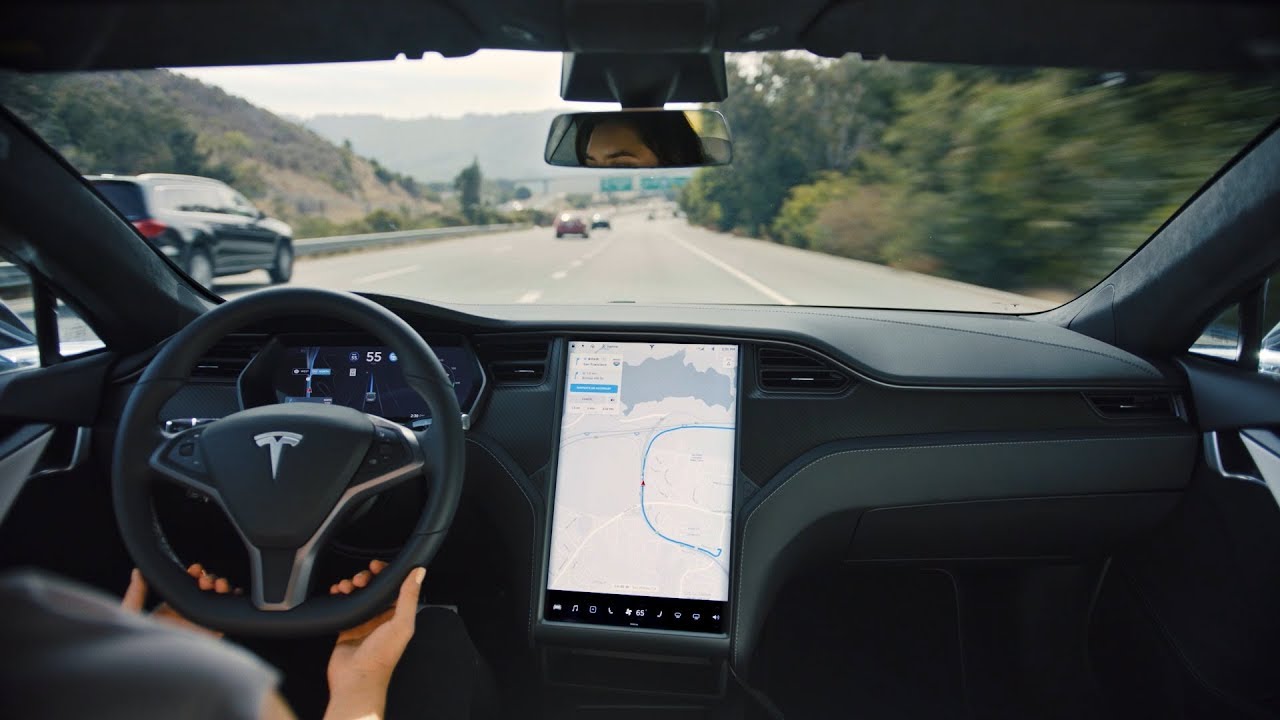The Insurance coverage Institute for Freeway Security (IIHS) examined Tesla Autopilot safeguards and located that drivers are fairly fast to adapt to the home windows of alternative the suite offers after warning them to concentrate.
The IIHS research sought to find out whether or not partially automated driving programs and their safeguards improve driver attentiveness. With the rollout of extra superior driver help programs (ADAS) and semi-autonomous driving functionalities, the objective is to extend security.
Nonetheless, these suites nonetheless require the driving force to concentrate and pay attention to any potential alternative to take over if wanted. These driving programs and options are designed to extend security however nonetheless require the driving force’s full consideration, therefore their semi-autonomous label.

Credit score: Tesla
For the research, the IIHS examined each Tesla Autopilot safeguards and people obtainable in Volvo’s Pilot Help.
The research gave 14 drivers a month with a 2020 Tesla Mannequin 3 and required them to journey on Autopilot, when obtainable, over one month. The IIHS wished to see how drivers behaved main as much as, throughout, and after consideration reminders prompted by an absence of concentrate on their finish.
The Autopilot research discovered that drivers may be taught safeguard sequences and determine “home windows of alternative” to carry out non-driving-related duties. These automobiles nonetheless utilized an Autopilot nag and a torque sensor to watch whether or not the driving force was paying consideration. Failure to maintain palms on the steering wheel would end in consideration reminders.
Failure to alter after the reminders would end in suspension of the Autopilot system, generally known as “Autopilot jail.”
The research discovered:
“In whole, the volunteers drove a bit of greater than 12,000 miles with Autopilot engaged. Throughout that point, they triggered 3,858 attention-related warnings from the partial automation system. About half of these alerts occurred once they had at the least one hand on the steering wheel however have been apparently not transferring it sufficient to fulfill the torque sensor.”
Most warnings didn’t go previous the preliminary reminder, and solely 72 cases resulted within the driver not responding quick sufficient to forestall the alerts from escalating.
The research discovered that whereas preliminary warnings elevated by 26 % over the primary 4 weeks, exhibiting drivers have been vulnerable to count on it, escalations fell by 64 %, that means they didn’t enable the system to proceed warning them.
Nonetheless, this doesn’t imply that non-driving secondary actions stopped after the primary warning. As an alternative, the research confirmed one thing attention-grabbing:
“The researchers discovered that the drivers did nondriving secondary actions, seemed away from the highway, and had each palms off the wheel extra typically in the course of the alerts and within the 10 seconds earlier than and after them as they realized how the eye reminders labored. The longer they used the system, the much less time it took them to take their palms off the wheel once more as soon as the alerts stopped.”
The IIHS admits that the protection influence of the change is tough to measure. Whereas the company famous that some analysis exhibits the longer a driver permits their consideration to wander, the extra doubtless they are going to be concerned in an accident, the research additionally mentioned that “even quick lapses of consideration develop into so frequent that the intervals of supposed engagement between them have little worth.”
The research additionally mentioned the safeguards might be useful to habits instantly and in the long run, and different patterns confirmed doubtlessly unintended penalties:
“The present research has proven that driver interactions with partial automation are dynamic. Among the modifications we noticed point out that system safeguards can beneficially form habits each instantly and in the long run, whereas different patterns revealed doubtlessly unintended penalties. It is very important be aware that these findings are doubtless not distinctive to Tesla’s Autopilot, as many programs in the marketplace have overtly related safeguard designs. As such, some observations from this research possibly related to different driver help expertise that also requires the driving force to be engaged within the driving process.”
IIHS Senior Analysis Scientist Alexandra Mueller, who led the research, mentioned:
“These outcomes present that escalating, multimodal consideration reminders are very efficient in getting drivers to alter their habits. Nonetheless, higher safeguards are wanted to make sure that the habits change truly interprets to extra attentive driving.”
Whereas this research offers proof that maybe higher safeguards are wanted, you will need to be aware that Tesla has upgraded the in-cabin digicam to watch driver attentiveness.
Tesla prompts cabin-facing digicam in bid to enhance car security
Moreover, many vehicles are on the highway with out these driver help and security options.
Distracted driving goes to happen whether or not a car is provided with fashionable expertise or not.
Tesla and different automakers have introduced their latest automobiles in control within the struggle in opposition to distracted driving, and maybe this research confirmed that warnings may and will come at various charges to forestall anticipation from drivers.
I’d love to listen to from you! When you’ve got any feedback, issues, or questions, please electronic mail me at [email protected]. You too can attain me on Twitter @KlenderJoey, or when you’ve got information ideas, you may electronic mail us at [email protected].



